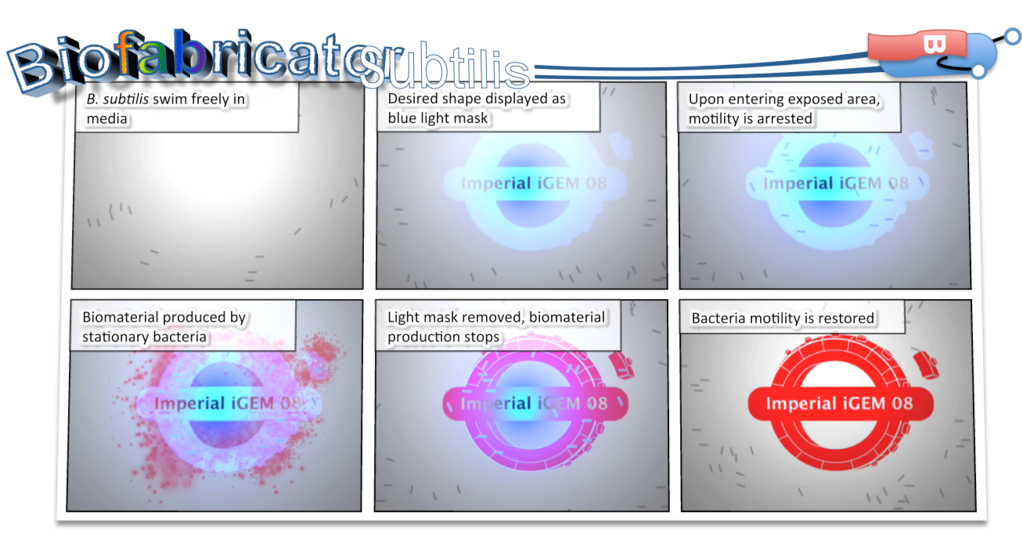From 2008.igem.org
(Difference between revisions)
|
|
| Line 16: |
Line 16: |
| | | | |
| | | | |
| - | [[Image:Imperial_2008_Bioprinter_Cartoon.png | center | 600px | Overview of our planned system]]
| + | <html><img width="100%" src="http://i59.photobucket.com/albums/g305/Timpski/Comic.png"></html> |
| - | [[Image:Imperial_2008_Basic_Circuit.png | center | Basic Circuit Diagram]]
| + | |
| | | | |
| - | | + | Applications of our Biofabricator range from regenerative tissue engineering to BioCouture. |
| - | Applications of our Biofabricator range from regenerative tissue engineering to Bio-Couture. | + | |
| | | | |
| | | | |
Revision as of 17:12, 16 October 2008
|

|
For the 2008 iGEM competition, the Imperial College Team aims to develop a genetically-engineered Biofabricator, using the Gram-positive bacterium Bacillus subtilis as our chassis. Our Biofabricator aims to produce self-assembling biomaterials in specified 3D shapes, using light as the trigger.

- Light on
- Motility arrested
- Biomaterial produced
- Light off
- Biomaterial production stopped, movement resumed
|
|
| Overview
|
- First by utilising an endogenous light-sensing mechanism, the bacteria is captured in the desired location using 3D holography.
- Next bacterial locomotion is suspended in the region of interest using a recently-discovered clutch mechanism. This involves disengaging the flagellum from the motor protein.
- Finally, when our bacteria are stationary in the correct location, the biomaterial production is triggered. These biomaterials can self-assemble to form a 3D bio-scaffold.

Applications of our Biofabricator range from regenerative tissue engineering to BioCouture.
Please continue on to our project pages - you may want to start with our >>> Project Specifications >>>
|
|
|
 "
"







